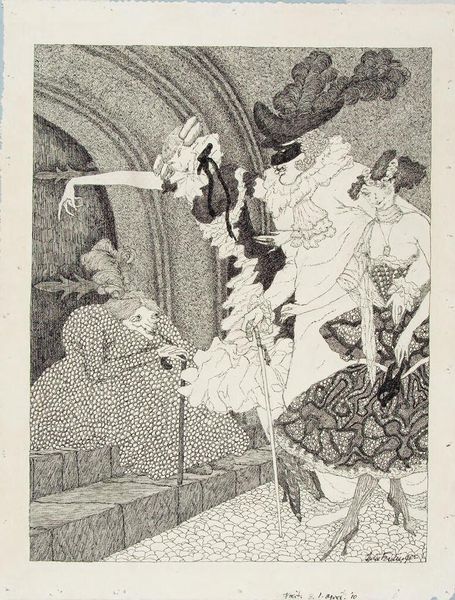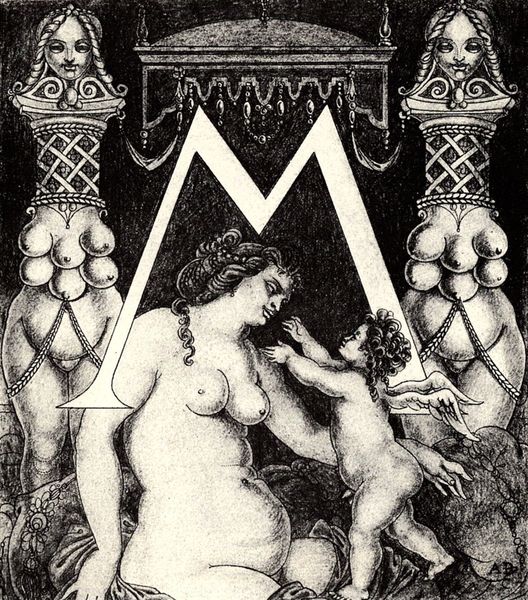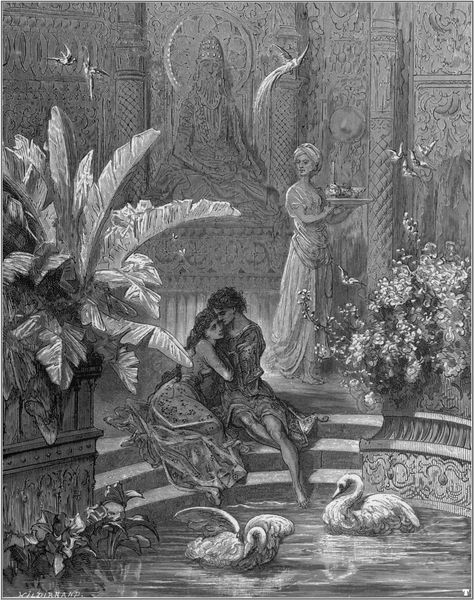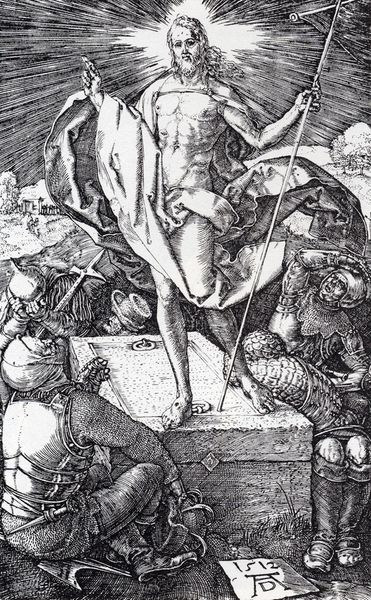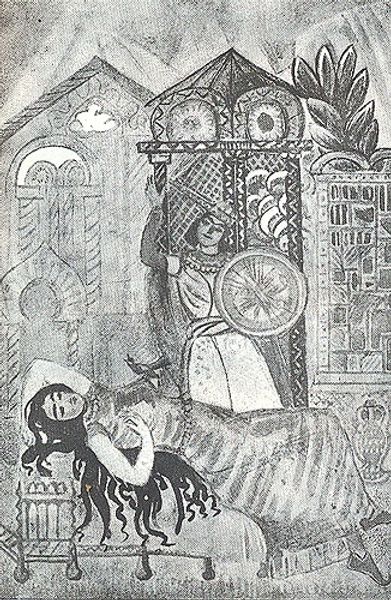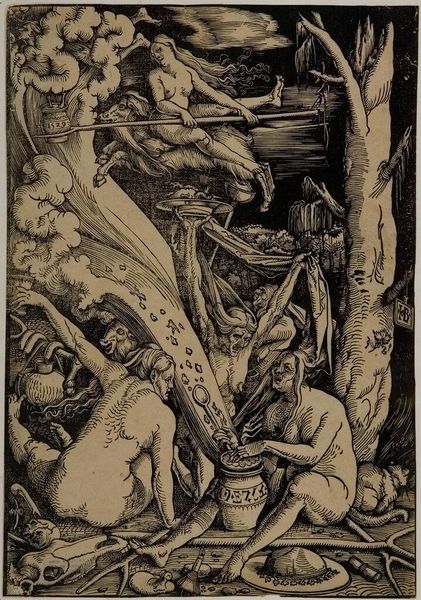
drawing, ink
#
drawing
#
allegories
#
allegory
#
fantasy art
#
symbol
#
ink
#
pen-ink sketch
#
surrealism
#
symbolism
#
nude
#
erotic-art
Dimensions: 17.5 x 16.5 cm
Copyright: Public domain US
Curator: Look at the intense detail in Frantisek Kupka's drawing, "The Song of Songs," completed in 1904. The piece is an ink drawing, showcasing the artist's symbolism. Editor: It’s like a fever dream, isn't it? A dense, almost claustrophobic space teeming with figures, all rendered in stark black ink. There’s a powerful sensuality about it, but also something unsettling. Curator: Exactly. This piece blends erotic themes with broader allegorical intent. Kupka’s interests at the time centered on themes of love, longing, and perhaps, the perceived conflicts between spirituality and physicality that were circulating within artistic and intellectual circles. Editor: The gaze is interesting. The nude female figure is positioned in such a way that the composition itself centers around her sexuality, a problematic interpretation through today's social awareness. The work exists during a transitional period where many artists attempt to subvert traditional portrayals but ultimately, fall short. It brings forth important discussions about consent, sexuality, and artistic representation. Curator: Indeed. Her placement and the surrounding symbolism—the snakes, the sculptures— speak to the complex and often contradictory ways that women's bodies were represented at the turn of the century. Also, notice the Stars of David—another clue pointing to the themes that Kupka wove together. Editor: And I see not just the cultural baggage, but the artist also experiments with representing this internal and intellectual landscape, with all its contradictions and messiness, using this rich symbolic language. Kupka dared to depict the forbidden. The surrealism allows us to confront the artist's fantasy of both woman and eroticism. Curator: I agree, and through this provocative, allegorical style, Kupka challenges the conservative artistic climate and social constraints through the very language of visual culture. Editor: Right, considering his later ventures into abstraction, one could interpret "The Song of Songs" as a necessary confrontation, a step towards liberating himself—and his art—from such symbolic constraints altogether. It’s quite a compelling example of art and transformation. Curator: Definitely, and that’s how understanding art history really enriches the whole experience. Editor: I agree. Being socially aware while analyzing art helps you have a deeper connection with the work.
Comments
No comments
Be the first to comment and join the conversation on the ultimate creative platform.

